Josephine Florens
Year of birth: 1988
Where do you live: Currently based in Germany (originally from Odesa, Ukraine)
Your education: Master’s degree in Civil Law, Odesa National Law Academy; Master’s degree in International Law, Odesa International Humanitarian University; Individual studies in classical painting at Art-Ra School (Odesa)
Describe your art in three words: Poetic, symbolic, quiet
Your discipline: Oil painting
Website | Instagram
You originally studied law. What inspired you to make the leap into the world of painting?
Art has been with me since childhood — I constantly drew, attended art groups, and imagined magical worlds. But for many years, painting remained just a part of my inner life. I chose law under my parents’ guidance — they wanted stability and a secure future for me. My creative side continued to live in silence until a turning point came: the loss of my mother. It was an enormous personal tragedy. In the depth of grief, I instinctively turned to painting as a way to express pain, love, and memory. That was the moment when art became not just a comfort, but a true path. It offered me a language beyond words. Since then, painting has been my refuge, my purpose, and my response to life itself. It wasn’t a leap — it was a return to who I’ve always been.
How did your background in law influence your artistic perspective or discipline?
Legal education taught me discipline, structure, and the ability to analyze complex human stories — all of which deeply influence my art. In law, you learn to look beneath the surface, to see contradictions, motives, and hidden dynamics. That same mindset allows me to build psychological layers in my paintings. I’m especially drawn to unspoken emotions and internal states — and law gave me the tools to recognize and translate them into visual language. I was fascinated by forensic science, especially under Professor Iskenderov, whose real-life cases taught me to observe closely and think deeply. That habit of attentiveness transferred to the canvas. Also, legal writing helped me structure my ideas, which now helps me construct visual compositions with clear yet subtle meaning. In both professions, the goal is empathy: to understand the human condition in all its complexity.
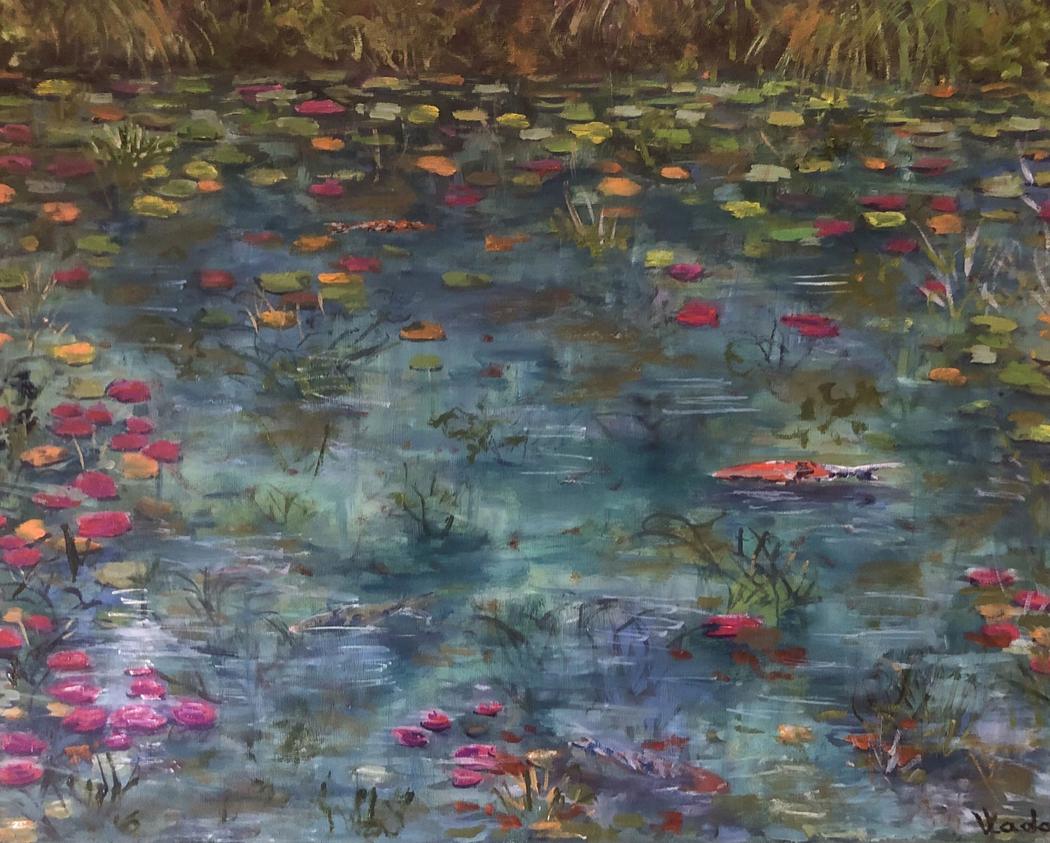 Josephine Florens | The Evening Pond
Josephine Florens | The Evening Pond
You describe your style as “modern vintage.” Could you elaborate on what that means to you?
“Modern vintage” for me is not just an aesthetic — it’s a worldview. I seek to combine classical compositional balance, muted palettes, and a sense of timelessness with a contemporary emotional depth. I’m inspired by the warmth and quietness of mid-century interiors, old fabrics, faded photographs — but I reframe them through my personal experiences and emotional landscape. My paintings often reflect stillness, memory, and fragility — but not nostalgia. I’m not trying to recreate the past. Rather, I use its textures and forms to say something about the present: about resilience, tenderness, and survival. “Modern vintage” allows me to build emotional bridges between then and now. It is a way to speak softly but deeply — to invite the viewer into a moment that feels familiar, yet resonates anew.
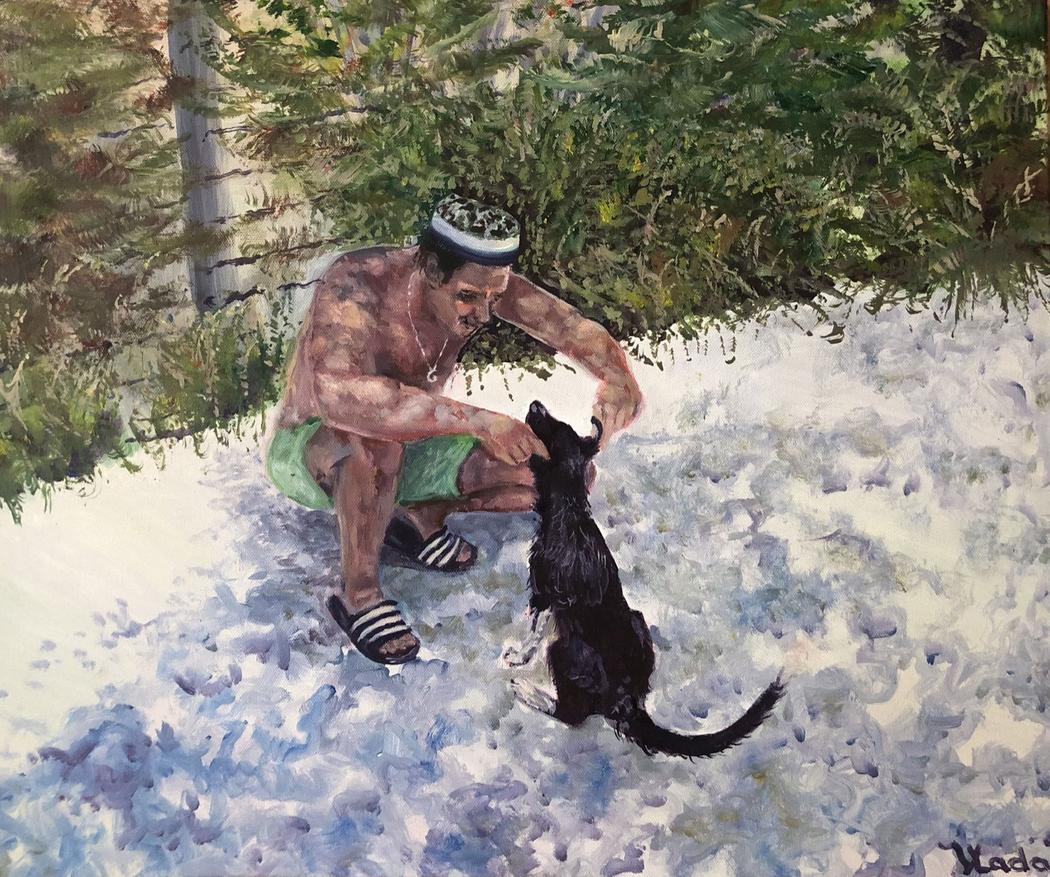 Josephine Florens | A Man And A Dog
Josephine Florens | A Man And A Dog
What role does symbolism play in your paintings?
Symbolism is essential in my work. I rarely depict anything literally. Instead, I use objects, gestures, and light to create emotional and psychological subtext. A tilted chair, a shadow across a face, a window left slightly open — these become symbols of absence, longing, or silent strength. This approach reflects how I experience life: full of layered meanings and quiet signs. Painting allows me to say what can’t be said directly — especially as someone who has lived through grief, displacement, and war. I want my viewers to feel something before they “understand” it. My symbolism is intuitive rather than intellectual — it comes from personal emotion. For me, a painting is successful if it lingers inside someone like a memory, not like a message.
Your works often reflect quiet, poetic moments. How do you choose the stories or feelings you want to depict?
I don’t plan themes in advance — they emerge organically. Often, it begins with a small sensation: the curve of a child’s hand, a quiet beam of light, a half-forgotten dream. I carry these moments with me until they ask to be painted. I’m drawn to emotions that are subtle but strong — quiet grief, inner strength, tenderness, waiting. Much of this comes from personal experience: my childhood in Odesa, the death of my mother, becoming a mother myself, the experience of war and emigration. These layers of life shape what I depict. I want my paintings to offer space — space for silence, for breathing, for emotional recognition. The stories I paint are not linear — they are emotional atmospheres. I let each image grow like a living thought, slow and sincere.
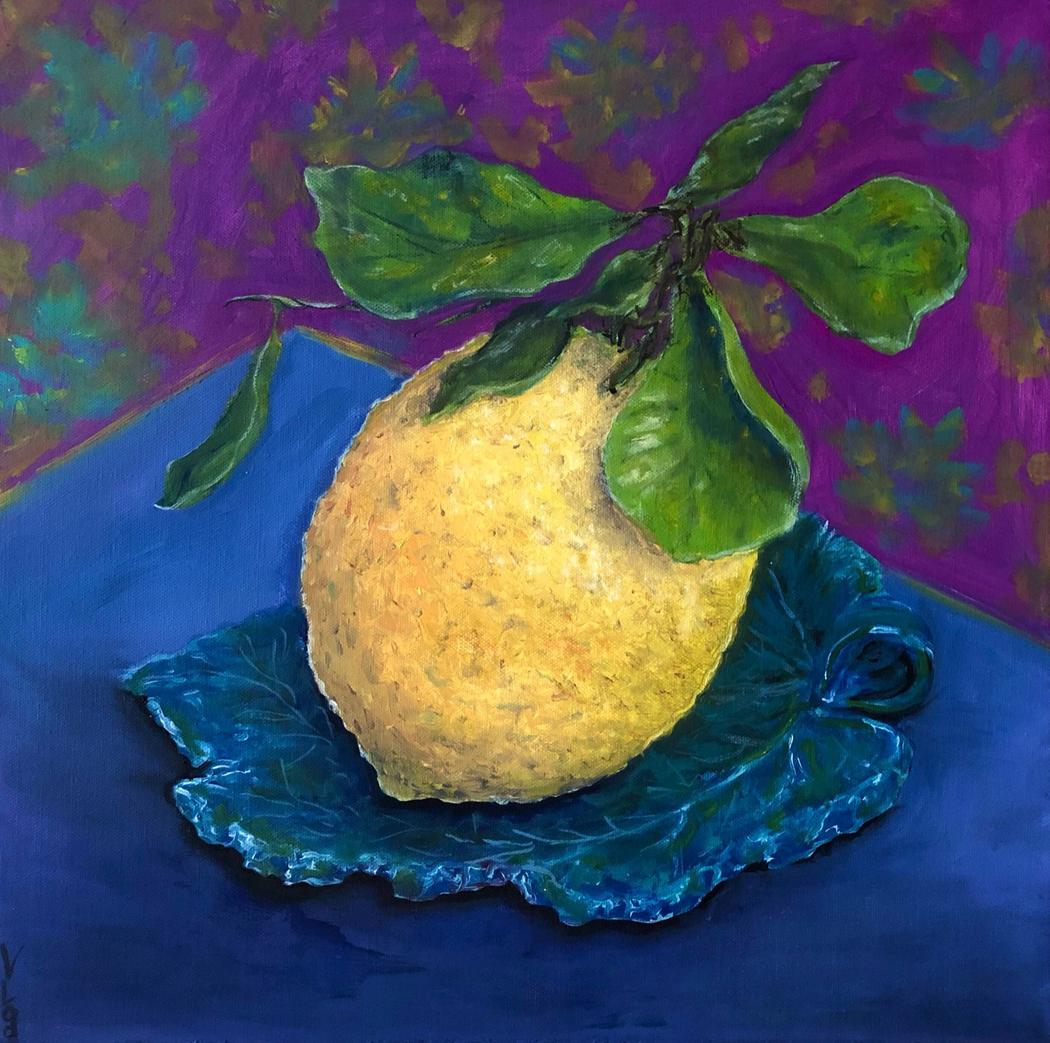 Josephine Florens | Art Lemon
Josephine Florens | Art Lemon
What draws you to oil paints as your exclusive medium?
Oil painting feels like a living material. It allows slowness, thoughtfulness, and subtle layering. I can return to a canvas days later and continue the dialogue with it — no rush, no pressure. It holds memory in every layer. Oil also lets me create depth, softness, and light in ways no other medium can. It’s tactile, sensual, and emotional. I often say it breathes with me. There’s also something timeless about oil — it connects me to a lineage of artists across centuries. I don’t try to imitate the old masters, but I feel I’m in quiet conversation with them. Oil paint offers not just beauty, but dignity — and that’s what I try to express through it.
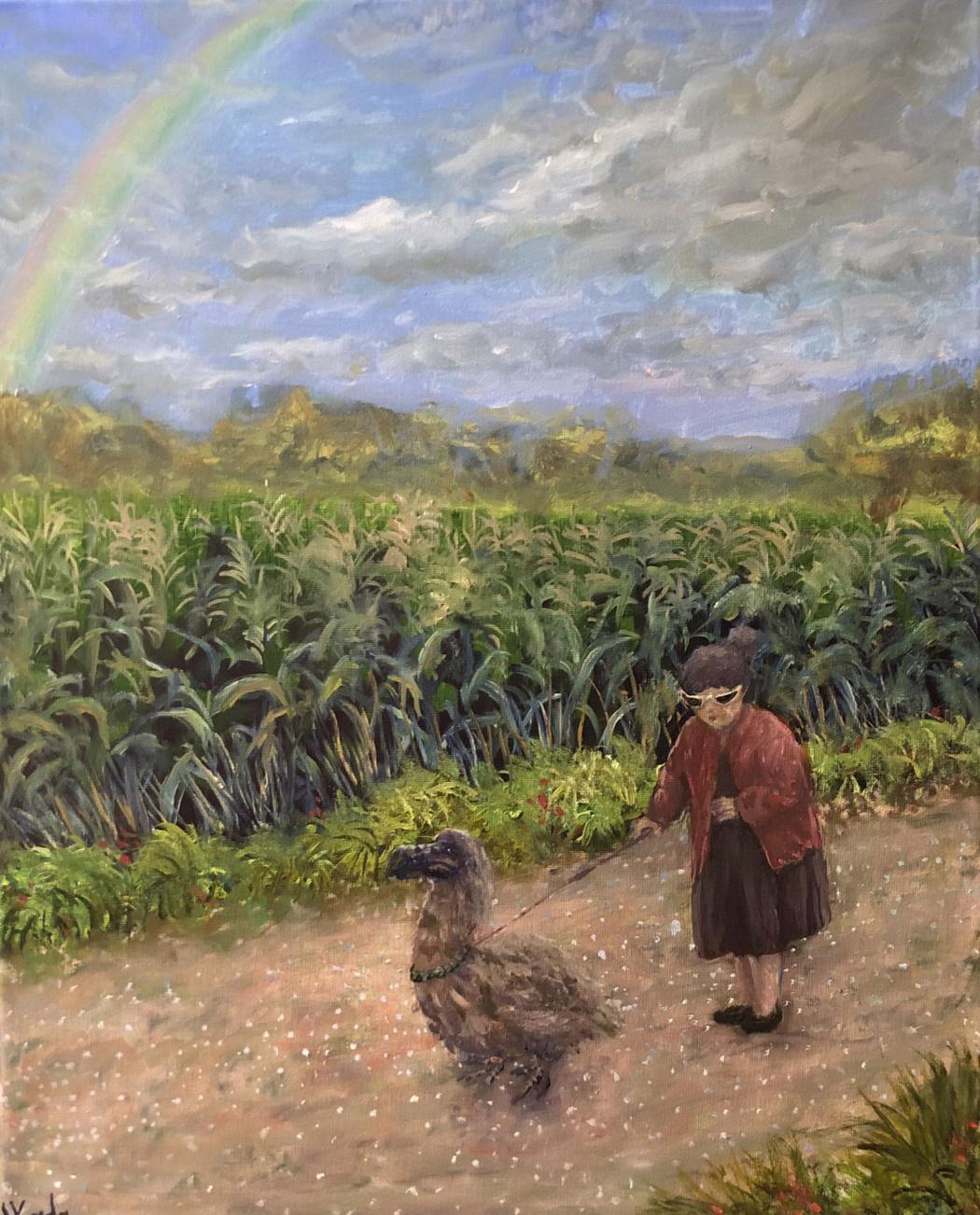 Josephine Florens | Frau Brötchen And Boris
Josephine Florens | Frau Brötchen And Boris
Which artists (past or present) have most influenced your work?
I’m inspired by artists whose work radiates warmth, softness, and a sense of quiet wonder. Carl Larsson’s harmonious interiors and depictions of family life shaped my sensitivity to beauty in the everyday. Beatrix Potter and Jenny Nyström taught me how gentleness, imagination, and storytelling can come together with sincerity and heart. I’m also drawn to the magical realism of Friedrich Hechelmann and Jean-Baptiste Monge — their fairy-tale atmospheres echo the quiet mysticism I often aim to express. Petrus van Schendel’s glowing candlelit scenes, Emile Munier’s tender portraits of children and animals, and Albert Anker’s peaceful domestic moments all showed me that realism can be infused with emotion, light, and soul. These artists remind me that painting is not only about technique or style — it is about generosity, about preserving light, memory, and a sense of goodness. That is what I try to carry into my own work.

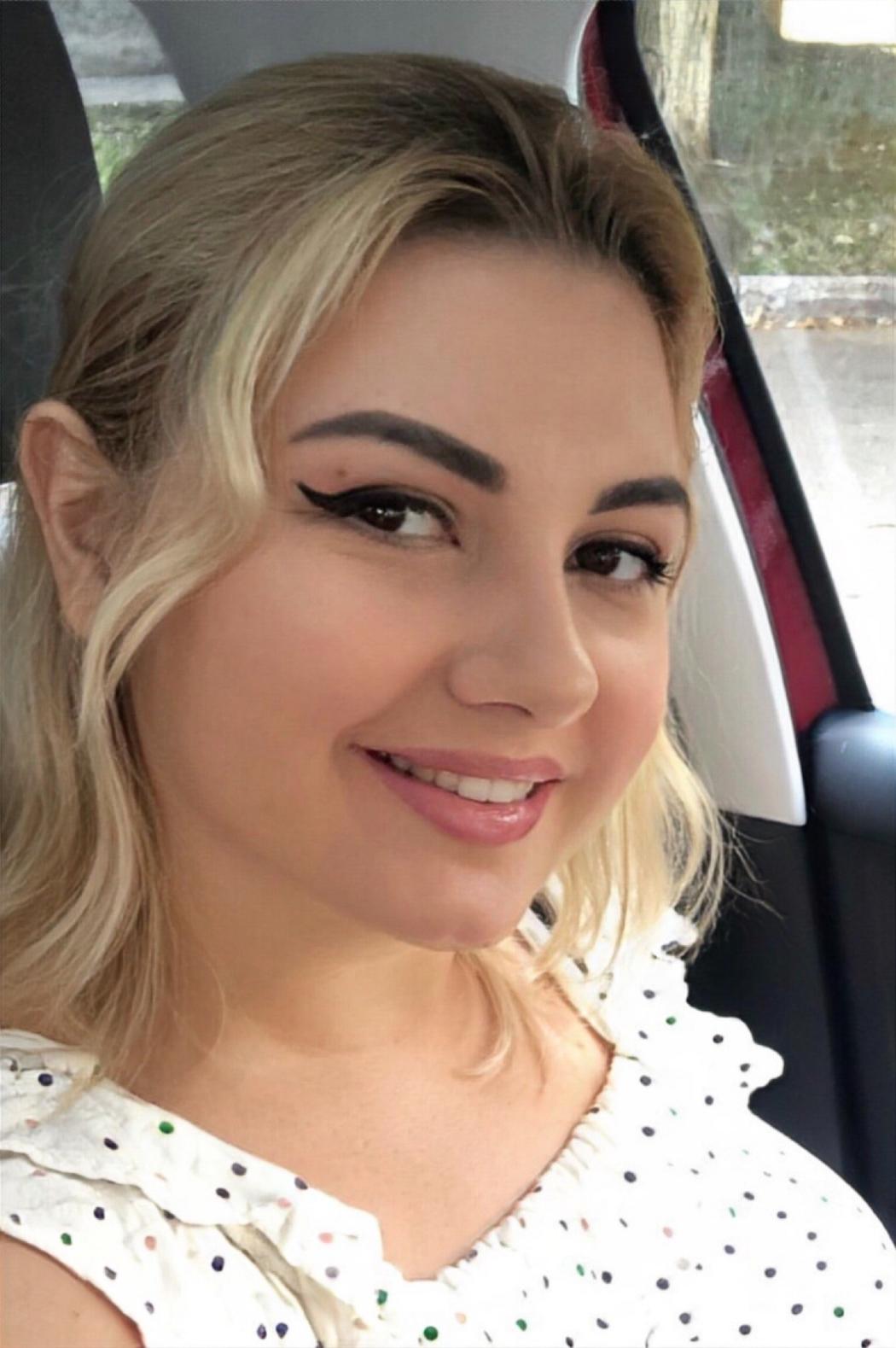
Leave a Reply